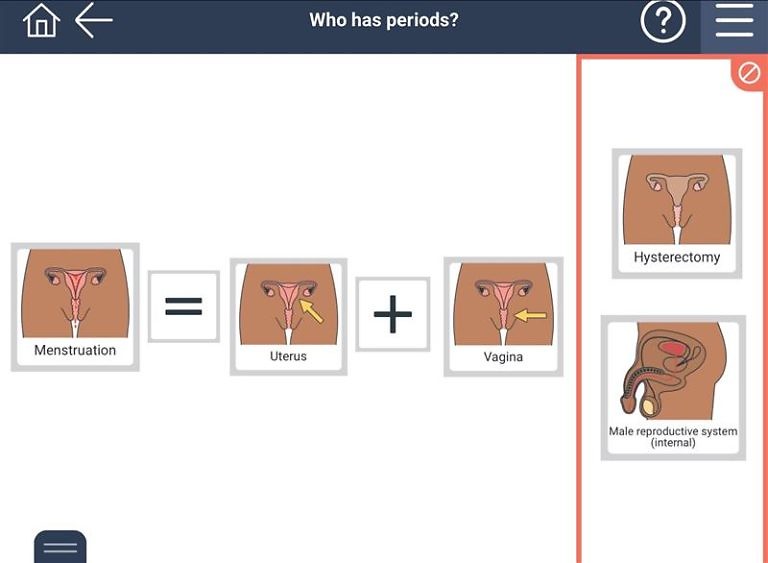Who has periods?
You can save a PDF of this lesson by printing this page and clicking “Save to PDF”
This lesson support curriculum codes:
- ABLEWA Stage C (VCHPEP030)
- ABLEWA Stage D (VCHPEP044; VCHPEP047; VCHPEP048)
- Year 5 (ACPPS052)
- Year 6 (ACPPS052)
Overview
This lesson aims to make the difference between male and female reproductive systems explicit by teaching that only people with a uterus and vagina have periods. This supports understanding that men/boys who have transitioned to live as women/girls do not have periods and that women/girls who have made social transitions to live as men/boys will continue to experience menstrual cycles. People who have had a hysterectomy do not experience a menstrual cycle.
Foundation Knowledge for this lesson includes differentiation of male and female bodies; awareness of age and body differences between babies, children, adolescents, and adults; and public and private body parts.

Generalisation ideas:
- Sorting: the task could be simplified to include pictures of males and females; young female children vs young female adults.
- Contraception: for older students discuss options for reducing or stopping periods (e.g. implananon, the pill, depo provera) with consideration of health risks including STI transmission even though likelihood of pregnancy is very low (ACPPS092).
- Who can you talk to about periods? Identify key trusted adults your student can speak to if they have further questions.
